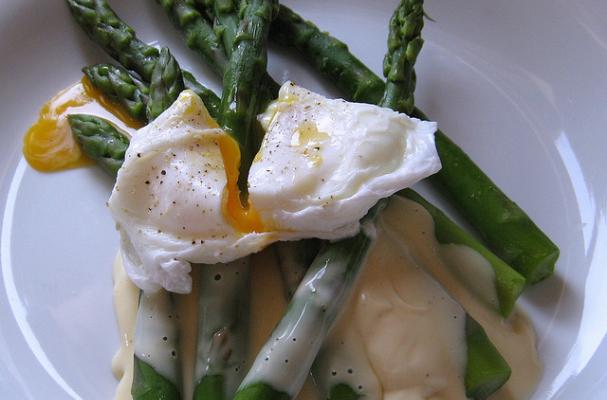
Asparagus smothered in lemony hollandaise. Silky lasagne noodles baked beneath creamy béchamel. Tender poached chicken swaddled in a velvety velouté. In French cuisine there are five basic sauces known as the "mother sauces." Knowing the basics of these sauces can elevate your culinary skills from a Garçon de cuisine (kitchen boy) to a Chef de cuisine (chief of kitchen). Well, that may be an exaggeration, but you'll be creating some darn good sauces!
Béchamel
Also commonly referred to simply as "white sauce," the base of bechamel is milk that's thickened with a white roux (flour and butter).
Typically served with Eggs, Fish, Pasta, Steamed or Poached Poultry, Steamed Vegetables, Veal.
Velouté
The base of this sauce is a light stock (one in which the bones have not been roasted, such as fish, chicken or veal) thickened with a roux and seasoned with salt and pepper. The sauce is generally referred to by the bones used in the stock, for example, Chicken Velouté.
Typically served with Eggs, Fish, Pasta, Steamed and Poached Poultry, Steamed Vegetables, Veal.
Tomaté (Tomato Sauce)
A tomato-based sauce thickened with roux. It's then seasoned with mirepoix (a sauté of carrots, onions and celery), garlic, salt and pepper, and/or a bit of sugar to balance the flavors.
Typically served with Fish, Pasta & Polenta, Grilled Vegetables, Chicken, Veal.
Espagnole (Brown Sauce)
This rich sauce is made with veal stock thickened with a brown roux. A brown roux is made by cooking flour and butter slowly over low heat until deeply golden.
Typically served with roasted meats.
Hollandaise
An emulsification of egg yolks and butter. It's typically flavored with lemon juice, but white wine is also common.
Typically served wtih eggs (such as Eggs Benedict), vegetables, and light poultry and fish dishes.
Image Sources:










